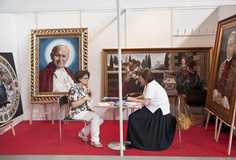SacroExpo / Poland
Pray & display
Poland remains one of Catholicism’s European bastions, where the religious market is thriving. Trade fair SacroExpo is a kitsch celebration of everything from souped-up confessional boxes to huge church bells – via an obligatory portrait of John Paul II of course.
If Poland falls in the Bible belt of Europe, then the Holy Cross Mountains in the southeast of the country are its buckle. And it’s here in the town of Kielce that SacroExpo is held.
Every second year, more than 4,000 visitors feed through the doors at SacroExpo to visit Italian, Finnish and Spanish brands showing alongside their Polish brethren. Besides the bell foundries, robe makers and stained-glass craftsmen, the fair welcomes everyone who keeps religious Sundays running smoothly, from air-conditioning salesmen, slate roofers and gold-leafers to art restorers, organ makers and Bible publishers. It’s the central showcase for the Polish clerical community. And the country is one of the most lucrative for the Catholic church: this was the nation, after all, that last year claimed to have erected the world’s tallest statue of Jesus Christ.
“Our churches are still full in Poland; it’s our best market,” says Zbigniew Gralewski of Tugal, a Gdansk-based company that specialises in subtitle screens that give worshippers a helping hand with hymn lyrics. Demonstrating the technology for Monocle, Gralewski hums along to “Cicha Noc” – or “Silent Night” – on the screen in front of him, holding a “Benedictus” keypad. It’s a new piece of technology that helps priests to MC congregations. Benedictus can do everything from turning on the air-conditioning to dimming the lights and fast-forwarding hymns. Messages can even be sent between priests on it, like a Biblical version of BlackBerry Messenger.
Predictably, the Benedictus is one of the few pieces of new technology on show at SacroExpo. A sense of tradition – and the fact most of the products here come with lifetime guarantees – means innovation is a bit pointless. Longevity is the name of the game in this business.
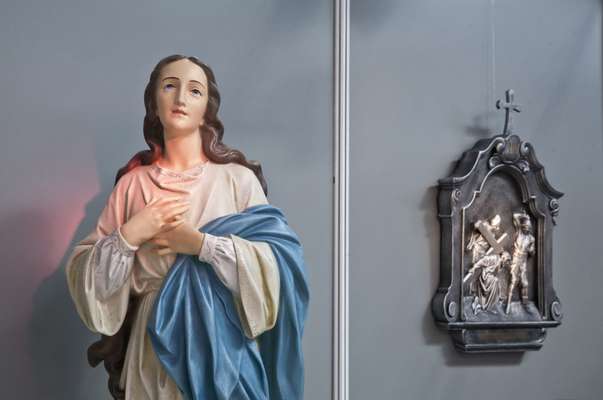
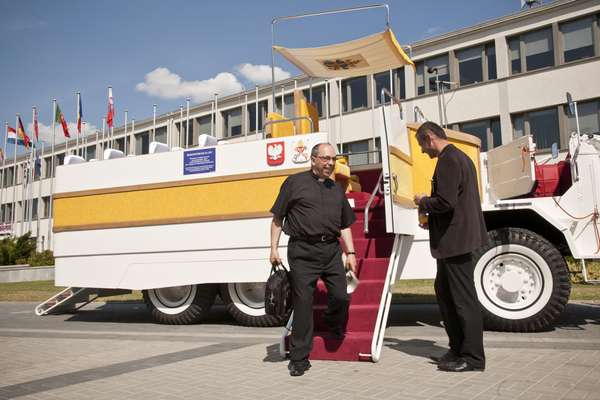
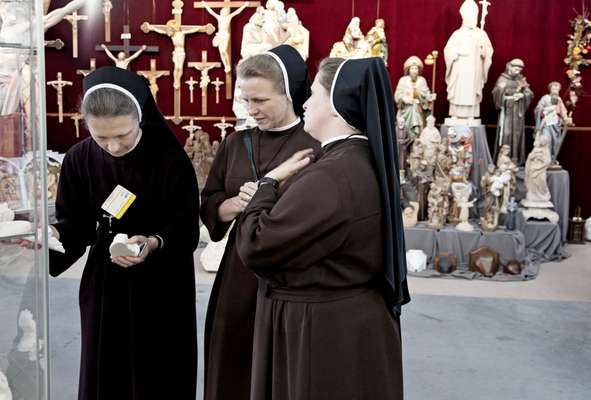
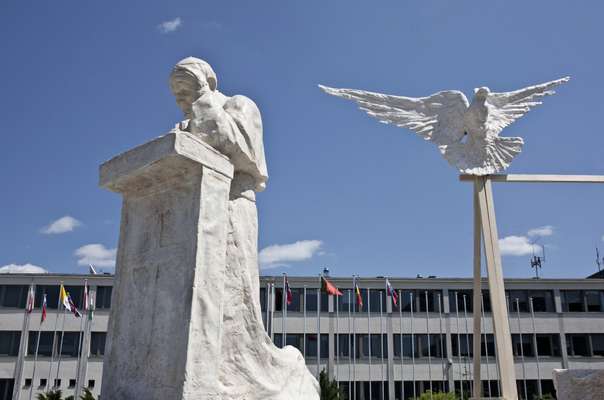
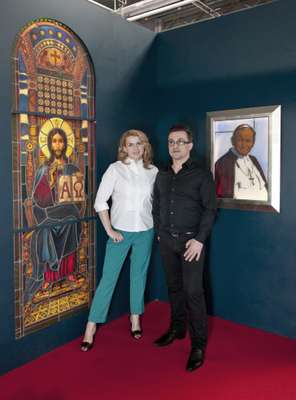
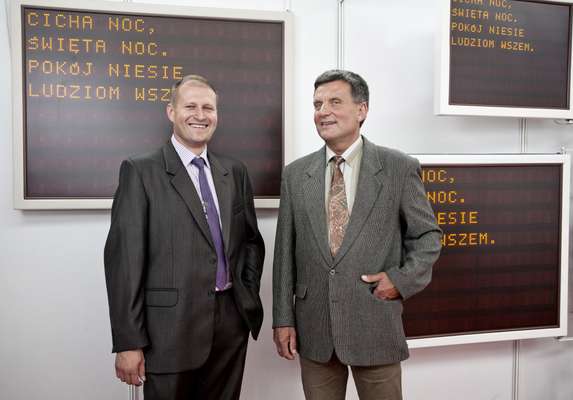
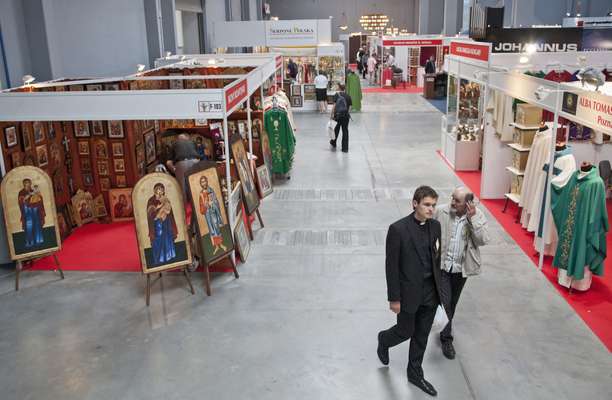

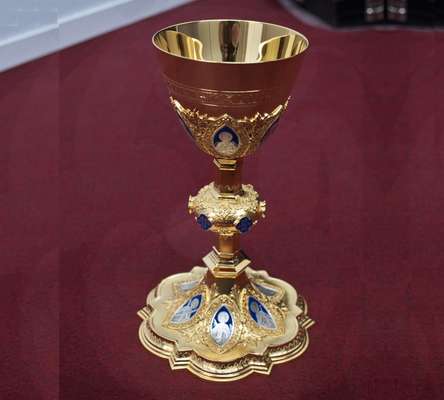
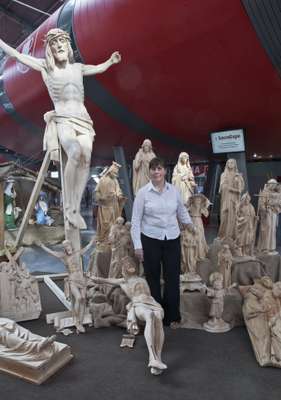
“We are a victim of our own quality,” says Bogda Felczynska, the co-owner of bell manufacturer Ludwisarnia Felczynskich. The company was established in 1808 and currently works on over 100 projects a year, producing bespoke bronze ding-dongs ranging in size from 25kg to 2.5 tonne humdingers. The bells are all handmade and, perhaps frustratingly, forged to last a lifetime and more.
The company has learnt to work on a global scale to counteract the sluggishness of the market and Felczynskich bells now toll everywhere from Togo and Canada to Australia and Peru. The bell foundry’s stand is outside in the courtyard of the exhibition centre and Felczynska sits in the sunshine eyeing whole assemblies of clergy enter the halls, shopping lists in hand.
“We come every year; every year there is something new,” says one of them. Priest Taraska is a clergyman from Radom, on the hunt for new robes at SacroExpo. How is his day going? “Bellissimo,” he replies, beaming, striding over to the Rekonstrukcja JP2, a replica of the “Popemobile” that Pope John Paul II first rode in 1979. It’s parked in the courtyard and Taraska takes to the throne, giggling with his arms outstretched benevolently. As you’d expect, JP is still big business here in Poland, spread across everything from candlesticks to stained-glass windows.
Taraska’s two friends look on, one of whom, a Polish-born priest, is now based in South Africa. After a day surveying the kitsch on show here, he’s less enthused by SacroExpo than Taraska. Mentioning the humble congregations he holds in South Africa, he points out he “can function over there without 99.9 per cent of what’s here”. He adds: “It’s a sign that the Catholic church has money, especially in Poland. There is a certain sensitivity that is missing here, it is a business.” Indeed, plenty of the businesses at SacroExpo are exploiting the wealth of the Polish church. Genuflex is an Italian church furniture manufacturer, exhibiting at SacroExpo for the first time. Why have they decided to show here? “To know the market in Poland,” says the company’s Gianluca Reginato. “There is probably a lot of business here.”
The headline act on Genuflex’s stand is a €5,000 confessional box made from rovere wood, a minimalist structure with air conditioning, heating, and touch-sensitive seatpads connected to a light that illuminates when sitting down to confess. Although 30 per cent of Italian business is for new builds, Reginato says Polish tastes are far less avant-garde. “But we want to propose a new product,” he asserts.
There is a pleasing handful of haute- design pieces hidden behind the baby blue statues of the Virgin, rainbowed walls of rosaries and general naffness at SacroExpo. SG Zelenski is a stained-glass manufacturer first established in 1902. Young husband and wife Piotr and Ursula Ostrowski bought the company in 2000 for €100,000, after it had been nationalised under communism in 1952. When they bought it, the assets consisted of little more than archived window concepts, most of which were never executed because of the Second World War. The team is now designing experimental commissions for new builds and brave refits taking inspiration from the old. “You read the archives like a good criminal,” quips Ursula.
Despite also working on the more conservative commissions – she is standing in front of a 20,000 zloty (€5,000) window depicting John Paul II – Piotr and Ursula are part of a small generation of Polish craftsmen trying to modernise how churches can look. Perhaps this has never been more important for Catholicism in Poland: though still hugely popular, 42 per cent attend Mass on Sunday, down from 57 per cent 20 years ago.
“There is the influence of the West on our culture here,” says Felczynska, back at the bell-makers. “People don’t need church so much now. It’s clear to see in the west of Poland.” Keen to see if she practises what she preaches, Monocle asks if she goes to church regularly. “Of course,” she smiles with a wink.
Religion in Poland
Believers
Members of the Catholic churches: 33.76m Members of the Old Catholic
Church: 47,000
Members of the Orthodox Church: 505,300
Members of the Protestant faith: 150,000
Other religious denominations (including Jehovah’s Witnesses, Jews and Buddhists): 135,000
Clergymen
Catholic clergymen: 30,300
Old Catholic Church clergymen: 117
Orthodox clergymen: 420
Protestant clergymen: 2,000
Churches
Catholic churches: 10,300
Old Catholic churches: 140
Orthodox churches: 240
Protestant churches: 1,000

